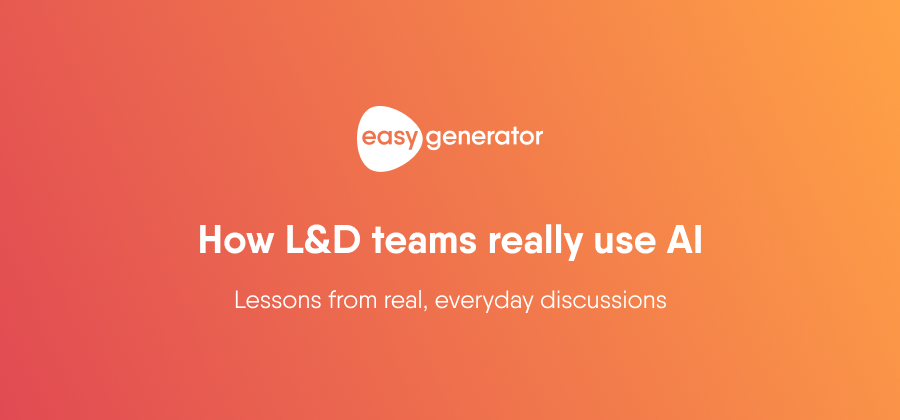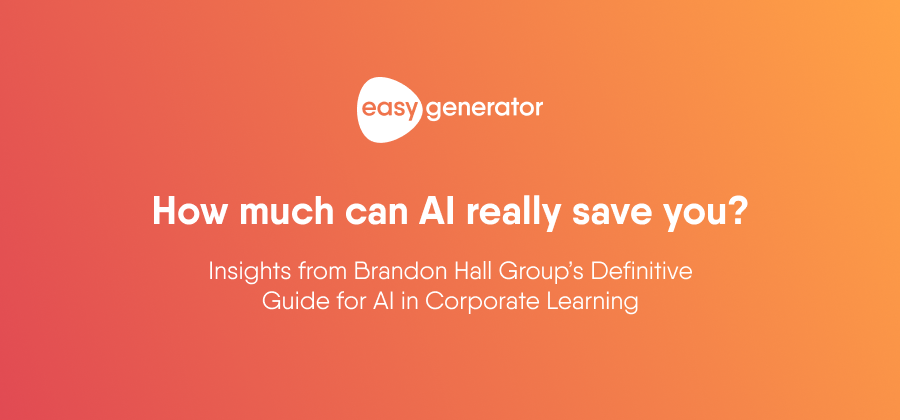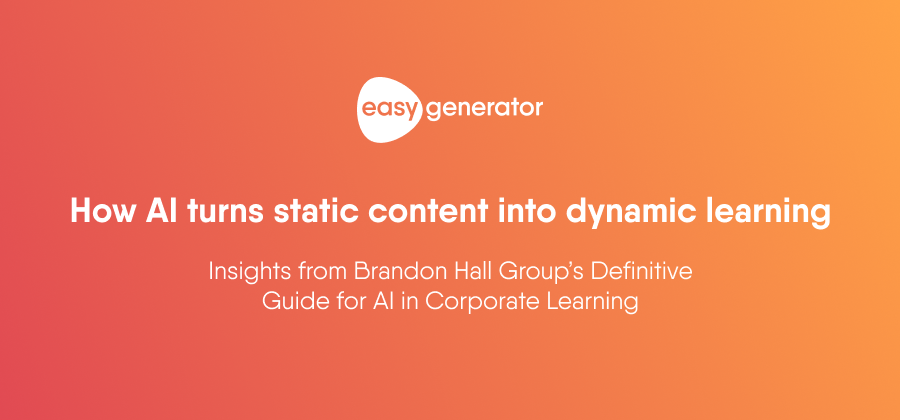10 Tips for successful blended learning
A blended learning approach, as the name suggests, refers to the use of more than one method when delivering education and training. Frequently, this will involve using online course materials together with a more traditional classroom-style approach.

Precisely because of its approach, blended learning is increasingly viewed as the way forward in L&D. It also offers elements of learner control to create a more personalized learning experience.
Why blended learning is effective
It’s important to understand what blended learning offers and how this can enhance your training and development strategy.
Continuous development
This approach will facilitate better long-term development and growth, as both the strategy and those using it, are not constrained by a narrow delivery method. Instead, the learning outcomes can be achieved through the flexibility offered by a blended learning approach.
Promotes collaborative and personalized learning
With its open style, blended learning is best placed to deliver training and development in a more informal and relaxed style. This, in turn, fosters a more collaborative environment, opening the door for greater participation. By combining this with elements of greater learner control, blended learning creates a much more personalized experience that allows learners to develop and apply knowledge at their own pace.
Impact on cost and efficiency
Effective blended learning approaches offer real opportunities to deliver faster outcomes at lower costs, as well as reaching a much wider audience by leveraging digital platforms.
What does blended learning actually look like in practice?
There are multiple models of blended learning, however here are just a few of the most successful within L&D:
Flipped Classroom
A flipped classroom provides learners with some materials ahead of the classroom time, the trainer will then further discussions about this material (virtually or physically). This approach is ideal for busy environments, where learners have less opportunity for time away from other duties.
Pre-Teaching
This method allows learners to study the preliminary material or lesson before the actual training session takes place. This pre-teaching, or pre-onboarding, enables employees to prepare and avoid repetition of the basics in the classroom. Consequently, the trainer’s time can be used for discussion and answering questions in class time.
Personalized Blending
Effective blended learning tailors training materials to a group of learners with different needs and ensures personalization for the specific requirements of individuals. This approach utilizes tech for one-on-one learning and makes effective use of SMART goals.
Get started with online training
Ready to switch from classroom training to digital learning? Our experts created this guide to help you transition smoothly.
10 Blended learning tips
The very nature of a blended learning approach leaves considerable scope for interpretation and discussion of the most effective strategies. However, we’ve gathered our top 10 expert tips to help you design your blended learning strategy or approach.
1. Consider the rationale
Ensure your original rationale for pursuing a blended learning approach is central to your strategic planning. Whether it’s the size of your training audience or their differing requirements, ensure your strategy addresses this.
2. Learning Objectives
Hold your blended learning objectives as the key to your strategic design and approach, rather than falling into the trap of simply designing your blended learning around the availability and use of a specific platform.
3. Think about what your learners want
Always think about your learners as you design any strategy and, if you haven’t already, use surveys to understand them better. This will ensure your blended learning approach can be tailored to their preferences and specific background.
4. Think collaboratively
The core principle of the blended approach is to ensure all the different components work together to achieve the learning outcome. Keeping sight of this when designing your strategy will ensure each building block fits neatly into place.
5. Consider building from the ground up
It’s often all too easy to simply repackage or re-purpose existing materials. But the real power of a blended approach is its ability to shake things up and take a new look. Don’t be afraid to discard what you’ve done in the past when designing your blended approach.
6. Match your tools to your learners and your trainers
Consider different technologies and platforms that are out there for you to harness, as well as the options already available to you from your in-house experts that can act as coaches, mentors and provide job shadowing opportunities.
Before you decide on your blended learning tools, though, consider your learning goals, your learners’ needs and of course your budget. An overly complex authoring tool, intended for instructional designers, will not suit subject matter experts who are new to e-learning. Likewise, opting for a mobile app-led program may not suit all learners.
7. Value all aspects of the blended approach equally
It can be easy to place too much emphasis or value on the classroom parts of your strategy; however, the key to your blended approach is knowing and understanding the importance of all the components in delivering your learning objectives.
8. Think about collaborative learning
There’s real power in collaborative learning when it works for the learning objectives and the cohort. Don’t overlook opportunities where this can be utilized to enhance the learning experience.
9. Run a pilot scheme
When you’re rolling out a large blended learning strategy, a pilot will be key to achieving your learning objectives. Use this to identify pitfalls in your approach; the learnings you take from this should inform continuous improvement.
10. Get buy-in from your learners and management
It’s likely a blended learning approach will be new to your organization, to help alleviate anxiety and scepticism it will be important to rationalize and properly position the benefits of blended learning to all relevant stakeholders.


